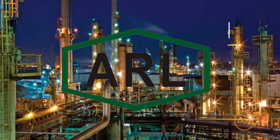KSE-100 index suffers consecutive annual decline for first time in 18 years: Economic Rundown

MG News | December 31, 2018 at 04:13 PM GMT+05:00
December 31, 2018 (MLN): As the curtains drop on year 2018, we assess certain economic indicators in retrospect including interest rates, currency devaluation and the local stock market performance, analyzing the performance and fluctuations of each along the way.
On an economic front, Pakistan underwent a great amount of pressure amidst depreciating currency, mounting inflation and interest rates, widening circular debt and depleting forex reserves, to name a few.
A look through the past several years’ stock market data has brought to limelight the fact that this is the first time in 18 years that the KSE – 100 index’s year-on-year returns have fallen two years in a row.
A detailed rundown of each of these economic figures is given below:
Currency Depreciation through the year:
The value of Pakistani Rupee has depreciated by around 26% over the year, as the greenback strengthened by PKR 28.36, from Rs.110.5 per USD on January 1, 2018 to Rs.138.8 today.
With the fiscal and current account deficit gathering momentum and mounting through the year, Pakistani currency depreciated by noticeable magnitudes on 5 occasions. The average percentage change in each of these depreciations turns out to be around 5%.
The heaviest round of depreciation occurred in October when the greenback gained over PKR 9 at the interbank market, taking a leap from PKR 124.3 USD to PKR 133.6 per USD. The rupee had plunged to a historical low on occasion of government’s announcement to approach the International Monetary Fund (IMF) for a bailout, given that at least 15% currency devaluation was recommended by the IMF.
Overall, the cumulative appreciation of dollar at interbank market has increased Pakistan’s debt burden by Rs.2400 billion.
The interbank market has closed the last day of the year at PKR 138.86 per USD, today.
Policy Rate through the Year:
In order to control inflation, the State Bank of Pakistan (SBP) raised monetary policy rates at 5 separate occasions through the year, bringing up the rates by 425 basis points cumulatively; from 5.75% in January 2018 to 10% on December 3, 2018.
The latest policy rate announcement was the most aggressive one, that pushed up the interest rate by 150 basis points to 10%, despite market expectation of around 50-100 basis points.
KSE-100 Index though the year:
Persistently rising interest rates, depreciating rupee value and internationally declining oil prices took a toll on the capital markets, causing them to slip for the second year in a row.
The local stock markets had welcomed the passing year (2018) at 40,471 points, around 15% lower than the beginning of 2017. Another year down the line, the index has slipped further to 37,066 down by another 8.4%, YoY.
The index witnessed its highest closing at 46,637 points in April, and dropped to its lowest closing value at 36,663 in October. Most of the decline has been witnessed during the second half of the calendar year.
Moreover, the Market Cap has dropped by around Rs.890 billion as of December 2018.
Forex Reserves:
During the course of this year, Pakistan’s forex reserves have come down by over 30%, mainly due to the decline in SBP reserves which have nearly halved over the year. On December 29, 2017, the total reserves stood at Rs.20.177 billion, of which Rs.14.106 billion remained in SBP reserve while remaining Rs.6.07 billion were recorded as Bank Reserves.
In comparison, total forex reserves currently stand at Rs.14.017 billion, of which Rs.7.457 billion comes from SBP reserves.
Copyright Mettis Link
Related News
| Name | Price/Vol | %Chg/NChg |
|---|---|---|
| KSE100 | 171,073.73 239.25M | -0.08% -130.44 |
| ALLSHR | 103,120.18 648.63M | -0.20% -206.29 |
| KSE30 | 52,237.50 75.59M | -0.16% -86.08 |
| KMI30 | 243,705.75 64.55M | -0.42% -1027.98 |
| KMIALLSHR | 66,920.67 287.33M | -0.36% -243.91 |
| BKTi | 47,435.09 35.67M | 0.57% 269.64 |
| OGTi | 33,136.01 4.63M | -0.58% -193.65 |
| Symbol | Bid/Ask | High/Low |
|---|
| Name | Last | High/Low | Chg/%Chg |
|---|---|---|---|
| BITCOIN FUTURES | 87,850.00 | 88,980.00 86,580.00 | -540.00 -0.61% |
| BRENT CRUDE | 62.35 | 62.38 61.72 | 0.28 0.45% |
| RICHARDS BAY COAL MONTHLY | 91.00 | 0.00 0.00 | 2.40 2.71% |
| ROTTERDAM COAL MONTHLY | 96.45 | 96.65 96.35 | 0.05 0.05% |
| USD RBD PALM OLEIN | 1,016.00 | 1,016.00 1,016.00 | 0.00 0.00% |
| CRUDE OIL - WTI | 58.32 | 58.37 57.74 | 0.31 0.53% |
| SUGAR #11 WORLD | 15.17 | 15.24 14.96 | 0.18 1.20% |
Chart of the Day
Latest News
Top 5 things to watch in this week
Pakistan Stock Movers
| Name | Last | Chg/%Chg |
|---|
| Name | Last | Chg/%Chg |
|---|




 Disbursement Report of Foreign Economic Assistance
Disbursement Report of Foreign Economic Assistance